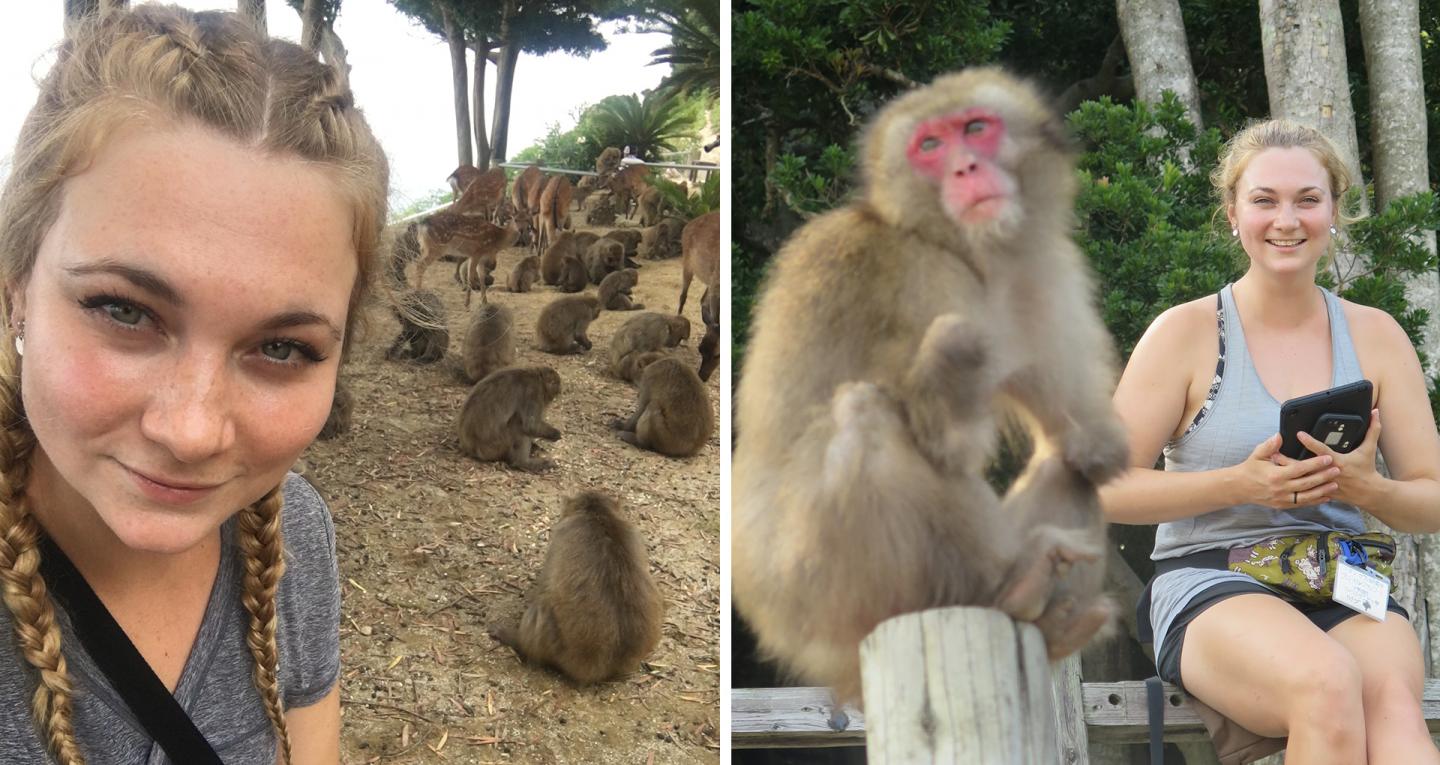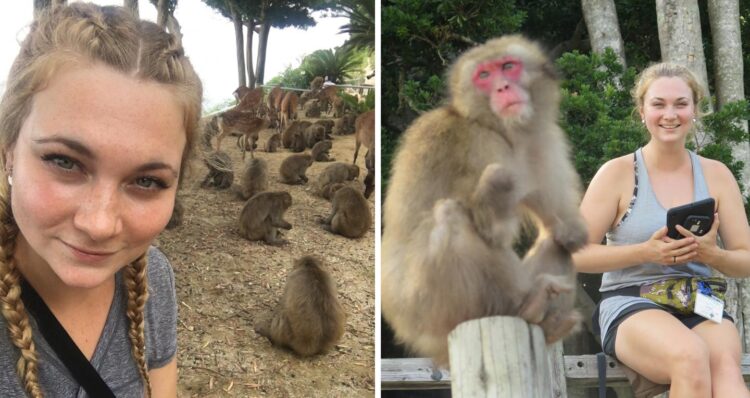Brogan Stewart demonstrates how territory home to hundreds of species of monkeys, apes and prosimians is being lost due to warming temperatures

Credit: Images courtesy Brogan Stewart
Stewart began looking at the effects of climate change on primate habitats with spatial data from the Coupled Model Intercomparison Project Phase 5, which estimates regional and seasonal temperature change per unit of CO2 emission, and range data of 426 separate primate species and subspecies, courtesy of the International Union for Conservation of Nature. Using these figures, she was able to project the effects current and estimated future global temperature increases would have on the precise territories that were home to particular primate species, based on projected emissions of CO2.
Specifically, she looked at annual average temperatures to see if they would exceed the pre-industrial seasonal maximum temperature (PSMT), or if they already had. In other words, she wanted to see how much hotter future average temperatures in a particular range would be than its hottest temperatures before carbon emissions began warming the planet.
To do this, she created individual range maps for each of the 426 species and subspecies of primates. She then estimated temperature increases as a direct result of the amount of CO2 emitted, measured in billions of tons.
According to her calculations, a 2˚C increase in global average temperatures above pre-industrial levels — the ceiling affirmed by the Paris Agreement — would lead to more than a quarter of all species ranges’ experiencing temperatures higher than those of pre-industrial times. For eight per cent of species, their entire current range would be significantly hotter than in the pre-industrial past.
“That’s where my assumption really gets its power,” she explains. “The maximum pre-industrial temperature under which these primates could function could have been a very brief period of time, for instance, the hottest week of the summer. But with this model, it becomes the average annual temperature.”
Hot, lazy, dangerous days
While two-thirds of primates still live in habitats with average temperatures below their PSMT, one-third are living in ranges that have experienced higher temperatures. That can spell serious trouble, especially if their ranges are particularly small.
“When it gets really hot, the primates need to rest in shade more. That means they can’t forage for food or socialize and play as much as they should,” she says. “Their food supply could also be at risk, and seasonal changes in temperature can even affect their reproductive cycles.”
She notes that nine species, several of them endangered and two critically so, are currently living in habitats that are entirely above their threshold temperature.
Her work has clearly impressed her supervisors. Turner says she is “a superb young researcher exploring scientific questions in animal behaviour while making her research relevant to conservation and sustainability. This study models potential climate change impacts on our closest animal relatives, and Brogan is continuing to bring together primates and sustainability issues in her current PhD research.”
Hoping to help
Stewart is well aware that the struggle to mitigate the effects of climate change is not the work of a single individual, but rather a collaborative effort that requires sharing knowledge among researchers. She hopes the 426 maps she created for this paper will be of use to future colleagues.
“If someone is looking for specific data, I could send them my maps where I isolate different species in different areas,” she says. “It would be ideal if this research actually contributed to conservation efforts.”
The Natural Sciences and Engineering Research Council, Canada Graduate Scholarships (NSERC-CGS), the Fonds de recherche du Québec – Nature et technologie (FRQNT), Mitacs Globalink and the Quebec Centre for Biodiversity Science provided funding for this study.
Read the cited paper: “Climate change impacts on potential future ranges of non-human primate species.”
Media Contact
Patrick Lejtenyi
[email protected]
Original Source
https:/
Related Journal Article
http://dx.





